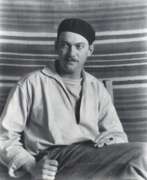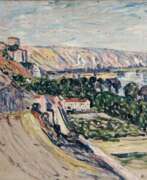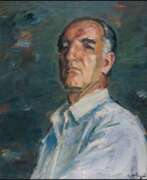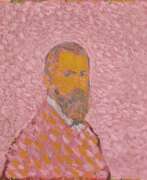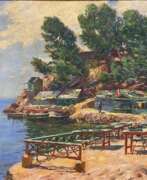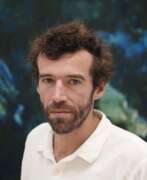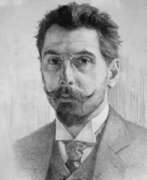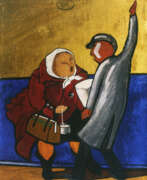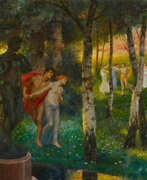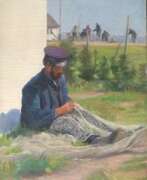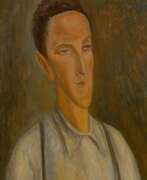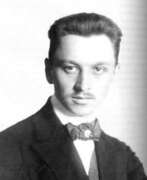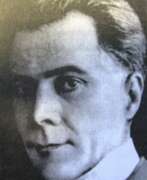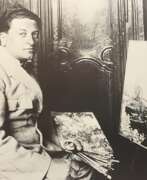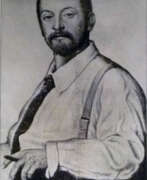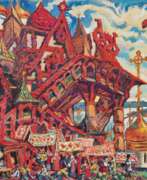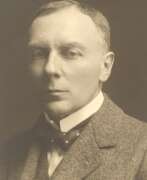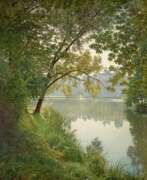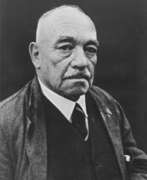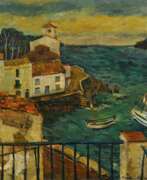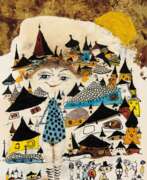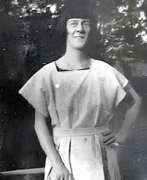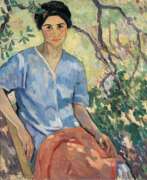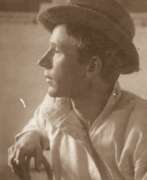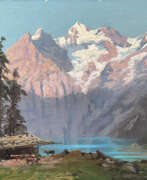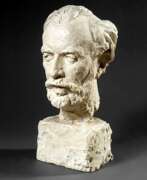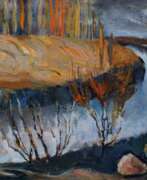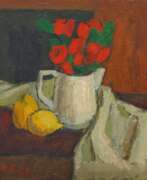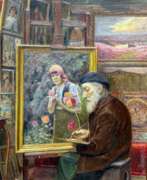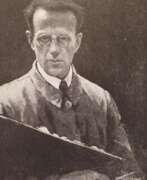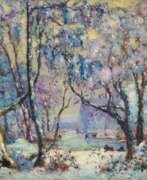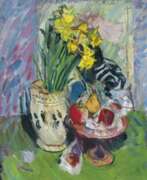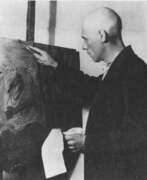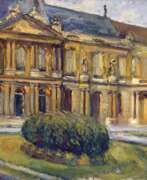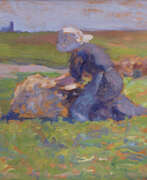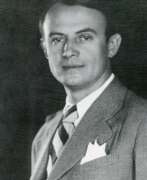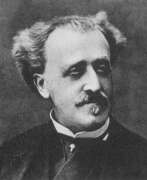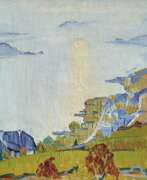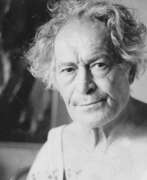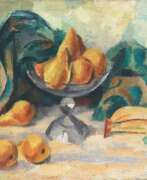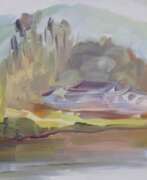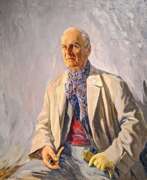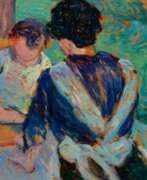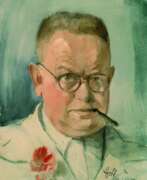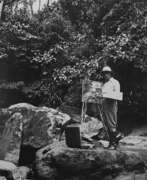Landscape painting Post-Impressionism
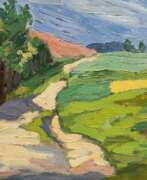

Louise Elisabeth Andrae was a German Post-Impressionist landscape painter and watercolorist. She studied with two landscape painters; Gustav Adolf Thamm in Dresden and Hans von Volkmann in Karlsruhe. She settled in Dresden, but spent long periods on the island of Hiddensee. There, she helped organize a group known as the Hiddensoer Künstlerinnenbund, an association of women artists that included Clara Arnheim, Elisabeth Büchsel, Käthe Loewenthal and Katharina Bamberg. They were regular exhibitors at an art venue known as the Blaue Scheune (Blue Barn), established in 1920 by Henni Lehmann. She also exhibited frequently with a group known as the Kunstkaten in Ahrenshoop.Wikipedia


Pyotr Yakovlevich Anurin (Russian: Петр Яковлевич Анурин) was a Soviet and Russian artist of the second half of the twentieth century. He is known as a painter, author of lyrical landscapes, often depicting the architecture of ancient Russian cities.
Pyotr Anurin was nicknamed "spring artist" by his contemporaries for his subject matter, style and technique of painting. Spring was a special time for the master, during this period he created many canvases, such as "Spring", "The Last Snow" and others. The main theme of his works in the last years of his life was the Central Russian landscape.
The artist's works are in various art galleries and private collections in many countries, including Russia, England, Germany, France, Israel and China.
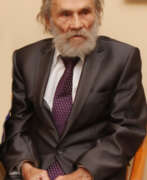

Boris Vladimirovich Arakcheyev (Russian: Борис Владимирович Аракчеев) was a Soviet and Belarusian artist of the second half of the twentieth and early twenty-first centuries. He is known as a painter and teacher.
Boris Arakcheyev worked in easel painting in the genres of landscape, still life, thematic paintings and battle scenes. A series of portraits of contemporaries and famous people occupies a special place in his creative heritage. He also worked in monumental painting - he was one of the creators of the diorama "Minsk Cauldron" in the Museum of the History of the Great Patriotic War of Belarus.
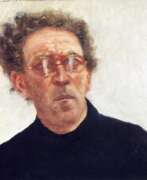

Avigdor Arikha (Hebrew: אביגדור אריכא) was a Romanian-born French–Israeli artist, printmaker and art historian.
Arikha painted directly from the subject in natural light only, using no preliminary drawing, finishing a painting, pastel, print, ink, or drawing in one session. His profound knowledge of art techniques and masterly draughtsmanship enabled him to abide by this principle of immediacy, partly inspired by Chinese brush painting.
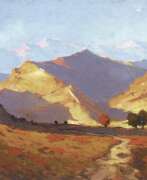

Gennady Fyodorovich Babikov (Russian: Геннадий Фёдорович Бабиков) was a Soviet and Turkmen artist of the twentieth century. He is known as a painter, graphic artist, watercolorist, master of landscape and still life and is considered the founder of the genre of Turkmen industrial landscape, representative of the Russian academic school of painting in Central Asia.
Gennady Babikov participated in the Great Patriotic War, at the front he created more than 100 graphic portraits of fellow soldiers. The artist was famous for his linocuts, and also developed a still life style, which was called "Babikov's" in Turkmenistan.
His works are in many private collections around the world.
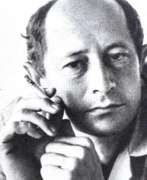

Stanislav Gennadievich Babikov (Russian: Станислав Геннадьевич Бабиков) was a Soviet and Turkmen artist of the mid-twentieth century. He is known as a painter, graphic artist, publicist, scenographer, as well as the son and pupil of Gennady Babikov, the founder of the Turkmen industrial landscape genre.
Stanislav Babikov is considered a continuator of the ideas of Russian Cezannism. He was a member of the informal Turkmen group "Seven", which sought to synthesize national elements and Western modernism in art. The master was also an author of articles on fine arts. His style reflects the influence of nature and climate of Turkmenistan and is characterized by bright color and expressiveness of color.


Leonid Fyodorovich Balaklav (Russian: Леонид Фёдорович Балаклав) is a Soviet and contemporary Israeli artist. He is known as a painter, graphic artist and cartoonist.
Leonid Balaklav began his career in Kishinev, then moved to Kiev, where he worked on scientific films. In 1987 at the Tokyo Film Festival he was awarded a gold medal for his animated works. In 1989 he moved to Israel, where he became known for his portraits, lyrical landscapes and works on religious themes. His work is often associated with Jewish identity, and his paintings are known for their intimacy and detail. He uses oil paints on wood to create his works.
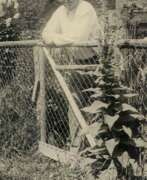

Arnold Balwé was a German post-impressionist painter.
He studied at the Antwerp Academy of Art and the Academy of Fine Arts in Munich, traveled extensively and painted landscapes he saw. Balwe's work is characterized by color intensity and vitality.
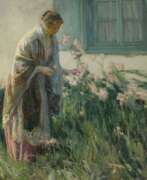

Myron G. Barlow was an American painter and illustrator known for his genre scenes, portraits, and landscapes. He was began his artistic training at the Art Institute of Chicago. Later, he studied at the Académie Julian in Paris, where he was influenced by the Impressionist and Post-Impressionist movements.
Barlow worked as an illustrator for various publications, including Harper's Weekly, Scribner's Magazine, and The Saturday Evening Post. He also taught at the Art Students League in New York City.
Barlow's paintings often depicted everyday life, with a focus on working-class people and their surroundings. His use of color and light gave his paintings a sense of warmth and intimacy.
Barlow was a member of several art organizations, including the National Academy of Design, the Society of American Artists, and the American Watercolor Society. He received numerous awards and honors during his lifetime, including a gold medal at the Panama-Pacific International Exposition in San Francisco in 1915.
Today, his paintings can be found in several museums and institutions, including the National Gallery of Art in Washington, D.C., and the Brooklyn Museum in New York City.
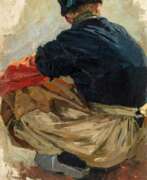

Hans von Bartels was a German painter.
Bartels is associated with the Düsseldorf school of painting. Although an oil painter of great power, he is also one of the leading German water-colour painters, mainly of marines and scenes of fishing life, painted with rude vigour and a great display of technical skill. Bartels made a great contribution to the development of the watercolour. He was the first to use watercolour paint of large formats without the earlier conventions. From 1887 Von Bartels came every summer to the Dutch coast, especially to Katwijk aan Zee, to paint the fisherfolk and their labour. He excels in storm scenes and in depicting the strong, healthy fishing-folk of the northern coasts. He became an honorary member of leading English, German, Dutch, Belgian and Austrian art societies.
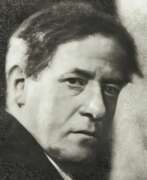

Abraham Adolf Behrman was a Polish artist of Jewish origin, best known for his paintings of Jewish shtetl life in the open air as well as landscapes and group portraits. He spent most of his life in Łódź and was killed during the liquidation of the Białystok ghetto during the Holocaust.


Alexandre Nikolayevich Benois (Russian: Алекса́ндр Никола́евич Бенуа́) was a distinguished Russian artist, art critic, and historian, celebrated for his pivotal role in the art world, particularly in painting and stage design. Born into a family deeply embedded in the cultural fabric of Russia, Benois was instrumental in the development of the Russian artistic movement at the turn of the 20th century. His contributions to art and culture extend beyond his vivid paintings; he was a founding member of the World of Art (Mir iskusstva), a significant art movement and magazine that sought to elevate Russian artistry on the global stage.
Benois' work is notable for its intricate detailing, vibrant use of color, and the ability to convey deep narratives within each piece. His designs for ballets such as "Petrushka" and "The Sleeping Beauty" remain iconic, showcasing his mastery over the fusion of visual art and performance. This synthesis not only enhanced the ballets’ visual appeal but also deepened the audience's engagement with the narrative. Museums and galleries around the world, including the Russian Museum in St. Petersburg and the Tretyakov Gallery in Moscow, house his works, underscoring his global recognition and the enduring appeal of his artistic vision.
For collectors and experts in art and antiques, Benois' oeuvre represents a fascinating exploration of early 20th-century Russian culture, art, and the avant-garde movement. His ability to blend traditional Russian themes with the modernist trends of his time makes his work a valuable study in the evolution of modern art. Those interested in the rich tapestry of Russian cultural history and the interplay between art and performance will find Benois' contributions invaluable.
To stay informed about new discoveries, sales, and auction events related to Alexandre Nikolayevich Benois, we encourage you to sign up for updates. This subscription is tailored specifically for enthusiasts eager to deepen their appreciation and understanding of Benois' legacy, ensuring you're the first to know about opportunities to acquire pieces connected to this luminary of Russian art.
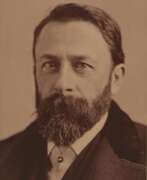

Albert Bierstadt, a German-American painter, became renowned for his expansive and romanticized landscapes of the American West. Born in Solingen, Germany, in 1830, Bierstadt moved to New Bedford, Massachusetts, at the age of two with his family. Largely self-taught, he initially worked as a drawing teacher before traveling to Europe to hone his skills. Bierstadt's European studies, particularly in Düsseldorf, greatly influenced his artistic style, equipping him with the techniques that he would later apply to his majestic depictions of the American wilderness.
Bierstadt's first major expedition to the West in 1859 marked the beginning of his lifelong fascination with the region. His works from this period, such as "The Rocky Mountains, Lander's Peak" (1863), captured the public imagination and established him as a leading figure in the Hudson River School. These paintings were celebrated for their detailed and idealized portrayal of the rugged landscapes and played a role in shaping the perception of the American West during a time of rapid territorial expansion and exploration.
Despite his success, Bierstadt's style fell out of favor towards the end of his career as tastes shifted towards realism and Impressionism. His later works, including "The Last of the Buffalo" (1888), were criticized for their perceived theatricality and excessive romanticism. Bierstadt's popularity waned, and he faced financial difficulties, but his legacy experienced a resurgence in the mid-20th century as interest in his technique and contributions to American art history grew.
For collectors and enthusiasts of American landscape painting, Bierstadt’s works offer a vivid, albeit embellished, glimpse into the 19th-century frontier spirit. His paintings are housed in major institutions like the Metropolitan Museum of Art and the National Gallery of Art, serving as testaments to his skill and vision.
To stay updated on exhibitions and sales related to Albert Bierstadt's works, consider signing up for alerts tailored to his artistic contributions. This subscription will keep you informed about new discoveries and auction events specifically linked to Bierstadt's enduring legacy.
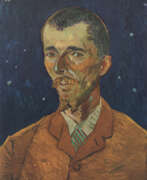

Eugène Boch was a Belgian painter, celebrated for his vibrant contributions to the Post-Impressionist movement. Boch was part of a prominent family known for their fine china business, Villeroy & Boch. He pursued his passion for art in Paris, studying under notable teachers such as Léon Bonnat and Fernand Cormon.
Eugène Boch's artistry is marked by his distinct style and use of color, which earned him spots in prestigious exhibitions like the Salon in Paris during the 1880s. His works, characterized by their emotional depth and innovative techniques, reflect the bold spirit of the Post-Impressionist era. He was not only a painter but also a visionary, whose works resonated with the aesthetic shifts of his time.
One of Eugène Boch's most notable associations was with Vincent van Gogh, who painted Boch in the famous portrait "The Poet," which Van Gogh described as a vision of idealistic and artistic purity. This painting is now housed at the Musée d'Orsay, symbolizing their profound connection and mutual respect. Boch's own works, like "The Red Roofs," demonstrate his unique ability to blend reality with his visionary outlook, showcasing scenes filled with vivid colors and dynamic compositions.
Eugène Boch's legacy extends beyond his paintings. Upon his death in 1941, he left a significant impact on the cultural heritage of Europe, influencing future generations of artists. His works continue to be celebrated in major museums and galleries, reminding us of his pivotal role in the development of modern art.
For collectors and experts in art and antiques, Boch's works offer a timeless exploration of Post-Impressionist vibrancy. Sign up for updates and stay informed about new sales and auction events featuring Eugène Boch’s timeless works, ensuring you never miss an opportunity to own a piece of art history.
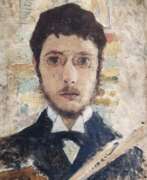

Pierre Bonnard was a distinguished French painter and printmaker, recognized as one of the foremost colorists of modern art. Born on October 3, 1867, in Fontenay-aux-Roses, France, Bonnard initially pursued law studies before embracing his true calling in art. He attended the École des Beaux-Arts and the Académie Julian, where his journey as an artist began in earnest.
Bonnard's art is characterized by its vibrant use of color and the portrayal of intimate, sunlit domestic interiors and gardens. His works often include scenes populated with friends and family, creating a narrative that is both personal and relatable. His distinctive style was influenced by Japanese prints, evident in his use of bold patterns and flat color planes. This influence earned him the nickname "Le Nabi très japonard" among his peers in the Les Nabis group, an avant-garde artists' group he joined in his twenties.
His early work, such as "Woman in Checkered Dress" (1890), showcases the influence of Japanese prints. Bonnard's talent was evident from the beginning of his career, with Claude Roger-Marx noting in 1893 his ability to capture fleeting poses and expressions. His work evolved over time, moving towards a style that resonated with the Intimists' focus on personal and intimate spaces.
Bonnard's wife, Marthe, was a recurring subject in his paintings, often depicted in everyday scenarios. Their relationship, spanning several decades, was a significant influence on his work. His paintings, such as "Dining Room on the Garden" and "Landscape at Le Cannet," demonstrate his mastery in capturing light and color, creating a sense of warmth and intimacy.
Bonnard's work remains influential and celebrated, with his paintings held in esteemed collections worldwide. His ability to transform everyday scenes into vibrant, color-filled canvases has made him a beloved figure in the world of modern art.
Art collectors and experts in the field will find Bonnard's work a study in the transformative power of color and composition. For those interested in staying updated on sales and auction events related to Pierre Bonnard's works, signing up for updates would provide valuable insights into this remarkable artist's enduring legacy.
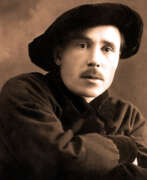

Alexei Nikolaevich Borisov (Russian: Алексей Николаевич Борисов) was a Russian and Soviet artist of the first half of the twentieth century. He is known as a painter, graphic artist, decorator, stage designer and teacher.
Alexei Borisov covered various themes in his work, from landscapes and portraits to works devoted to the partisan movement, industrialization and collectivization in Siberia, where the artist settled. His works, according to critics, stood out for their expressiveness, reverence, poetry and authenticity. The master left a significant creative legacy, including about 700 works of painting, graphics and decorative sketches.
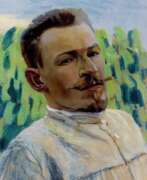

Victor Elpidiforovich Borisov-Musatov (Russian: Ви́ктор Эльпидифо́рович Бори́сов-Муса́тов) was a distinguished Russian artist celebrated for his unique contribution to the Post-Impressionist movement, combining elements of Symbolism, realism, and a decorative style that was all his own. Born in 1870 in Saratov, Russia, into the family of a former serf, Borisov-Musatov overcame early challenges, including a spinal injury that left him humpbacked, to emerge as a pivotal figure in Russian art. His education spanned the Moscow School of Painting, Sculpture and Architecture, and the Imperial Academy of Arts in Saint-Petersburg, further enriched by studies in Paris under the tutelage of Fernand Cormon. His admiration for French contemporaries, especially Pierre Puvis de Chavannes and Berthe Morisot, profoundly influenced his artistic direction.
Borisov-Musatov is renowned for his lyrical, evocative works that often depict the serene and idyllic life of the 19th-century Russian nobility, set against the backdrop of their estates. This half-illusory world, which he masterfully created, reflects a deep nostalgia and a retreat from the industrial harshness of his time. By integrating figures seamlessly into the landscapes, as seen in masterpieces like "The Pool" (1902) and "The Phantoms" (1903), he achieved a harmony that resonates with viewers for its beauty and tranquility. His use of mixed media, including tempera, watercolor, and pastel, allowed for subtle visual effects, making his works distinctive in their soft, dreamlike quality.
Borisov-Musatov's legacy extends beyond his paintings; he was a significant figure in the Russian Symbolist movement and a founding member of the Moscow Association of Artists. His works, which provide a poignant, poetic commentary on the era he lived in, are celebrated in Russian and international art circles alike. Notable paintings like "The Pool" and "The Phantoms" not only highlight his technical skill but also his ability to evoke emotion and atmosphere, making them favorites among collectors and art enthusiasts.
For collectors and experts in art and antiques, Borisov-Musatov's oeuvre offers a fascinating glimpse into the Russian Symbolist movement and the broader cultural milieu of the late 19th and early 20th centuries. His works, preserved in museums and private collections around the world, continue to enchant and inspire.
For those interested in staying informed about new product sales and auction events related to Victor Elpidiforovich Borisov-Musatov, subscribing for updates is highly recommended. This subscription ensures that enthusiasts and collectors alike will not miss the opportunity to own a piece of this remarkable artist's legacy, encapsulating the elegance and serenity that define his work.
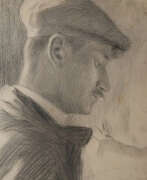

Georg Burmester was a German artist of the late 19th - first third of the 20th centuries. He is known as a painter, graphic artist, impressionist, representative of the Düsseldorf art school, and teacher.
Burmester worked mainly in the genres of landscape and marinas, but among his works there are also still lifes, as well as works in the genre of nude. He was a teacher at the Kassel Art School from 1912 to 1930 and was promoted to the rank of professor in 1917.
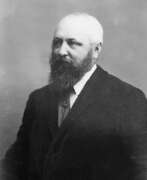

Theodore Butler was an American Impressionist painter who is best known for his depictions of the French countryside.
Butler studied at the Art Students League of New York and worked as an illustrator for publications such as Harper's Weekly and Scribner's Magazine. In 1887, he traveled to France to study at the Académie Julian in Paris. There, he met the Impressionist painter Claude Monet and became part of his inner circle of friends and collaborators. Butler eventually settled in the village of Giverny, where he lived for the rest of his life.
In Giverny, Butler painted landscapes and scenes of everyday life in the countryside, often featuring the gardens and water lilies made famous by Monet's own paintings. He developed a loose, painterly style that was influenced by the Impressionists but also showed the influence of Post-Impressionism.
Today, Butler's work can be found in the collections of museums such as the Metropolitan Museum of Art in New York City, the Musée d'Orsay in Paris, and the Art Institute of Chicago. His contributions to the development of Impressionism and his association with Monet continue to make him an important figure in the history of art.
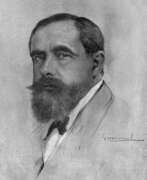

Hermenegildo Anglada Camarasa was a Spanish painter.
Camarasa studied at the Llotja de Barcelona School of Fine Arts under Modeste Urgel, whose work influenced his first landscapes. He moved to Paris in 1894, studying at the Académie Julian and the Académie Colarossi. His colorful style of painting shows a strong Oriental and Arabic influence, and his decorative style is associated with the work of Gustav Klimt.
In the early 1990s, Camarasa opened a painting school attended by many students, including Marie Blanchard. He was one of the founders of the Autumn Salons of Paris and was associated with the artists of the Vienna Secession. Camarasa's works from these years, depicting nighttime street scenes, Parisian cabarets and music halls, attracted the attention of Pablo Picasso, who had recently arrived in Montmartre; he even painted a profile portrait of Anglade.
In 1901 Camarasa took part in an international exhibition in Dresden, where he was a great success. He subsequently exhibited all over the world and was awarded gold medals in Venice (1907) and Buenos Aires (1910). During the war years 1939-1947 the artist lived in exile in France.
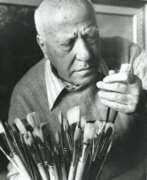

Michele Cascella was an Italian artist. Primarily known for his oil paintings and watercolours, he also worked in ceramics, lithography, and textiles. He exhibited regularly at the Venice Biennale from 1924 until 1942, and his works are owned by major museums in Italy and Europe, including Victoria and Albert Museum in London, Galerie nationale du Jeu de Paume in Paris, and Galleria Nazionale d'Arte Moderna in Rome.
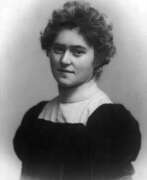

Maria Caspar-Filser was a German painter. She lived and worked mainly in Munich.
In 1913, she was the only woman among the founding members of the artists' association Münchener Neue Secession. In 1925 she became the first German woman painter to be awarded the title of professor. She taught at the Academy of Fine Arts in Munich.
Caspar-Filser primarily painted flowers, gardens and landscapes, influenced equally by Impressionism and Expressionism.
The Nazis considered Caspar-Filser's paintings "degenerate".
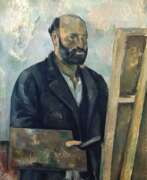

Paul Cézanne, a French Post-Impressionist painter, was pivotal in shaping the transition from 19th-century art to a new, revolutionary approach in the 20th century. His unique and exploratory brushstrokes, utilizing planes of color to form complex fields, made his work instantly recognizable and influential in the development of Cubism.
Cézanne’s early works, influenced by Romanticism and Realism, evolved into a groundbreaking artistic language. He challenged traditional perspective and academic art rules, focusing on objects' structural aspects and art's formal qualities. This approach led to a renewed emphasis on impressionistic color space and modulation principles.
His most notable works, like “Mont Sainte-Victoire,” “The Card Players,” and “The Bathers,” display his mastery in creating depth and dimension through color gradations. These paintings, initially met with skepticism, eventually cemented Cézanne’s reputation as a pioneering artist. His exhibitions, particularly the one-man show by dealer Ambroise Vollard in 1895, played a critical role in his recognition.
Cézanne’s impact on art history is profound, with greats like Henri Matisse and Pablo Picasso acknowledging him as a significant influence. His exploration of geometric forms and innovative use of light and color laid the groundwork for subsequent movements, particularly Cubism.
For collectors and art experts, Cézanne's works are more than just paintings; they are pivotal chapters in the narrative of modern art. His creations, bridging Impressionism and Cubism, continue to inspire and challenge contemporary artists.
To stay updated on new product sales and auction events related to Paul Cézanne, sign up for our updates. This subscription ensures you remain informed about the latest developments in the world of this revolutionary artist.


Edouard Léon Cortès was a French painter of French and Spanish ancestry. He is known as "Le Poète Parisien de la Peinture" or "the Parisian Poet of Painting" because of his diverse Paris cityscapes in a variety of weather and night settings.
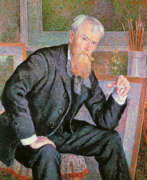

Henri Edmond Cross, a French painter and printmaker, emerged as a pivotal figure in the Neo-Impressionism movement, significantly influencing the realm of modern art. His work, celebrated for its innovative use of color and technique, played a crucial role in transitioning from Pointillism to broader, more expressive brushstrokes, marking a departure from strict naturalism. This evolution allowed for greater personal expression and creativity, profoundly impacting artists like Henri Matisse, who was inspired by Cross's harmonious representations of Arcadian landscapes.
Cross's paintings, characterized by their vibrant color harmonies and lyrical emotion, encapsulate the artist's desire to portray utopian ideals, often reflecting his anarchist beliefs in a hopeful, ideal society. His works, such as "L'air du Soir" and "La Plage de Saint-Clair," showcase his mastery of light and color, embodying the Neo-Impressionist vision of creating harmonies of pure color independent of naturalistic constraints. These pieces not only exemplify Cross's technical prowess but also his philosophical aspirations, intertwining art with social and political ideals.
Despite the challenges posed by his health in later years, Cross's productivity and creativity remained undiminished, leading to significant critical acclaim and commercial success. His solo exhibitions, particularly the one held at Galerie Druet in Paris in 1905, received widespread acclaim, underscoring his influence on the art world and his role in shaping the principles that would guide future movements such as Fauvism.
For collectors and experts in art and antiques, Henri-Edmond Cross's work represents a crucial juncture in the evolution of modern art, offering insights into the transition from the meticulous dots of Pointillism to the expressive freedom of later movements. His legacy is preserved in esteemed institutions like the Musée d'Orsay, where his masterpieces continue to inspire admiration and study.
For those interested in the intersection of art, culture, and history, signing up for updates on sales and auction events related to Henri-Edmond Cross can offer valuable opportunities to engage with the vibrant legacy of this influential artist. This subscription ensures access to the latest offerings and insights into the world of Neo-Impressionism, inviting enthusiasts to deepen their appreciation for Cross's contribution to modern art.
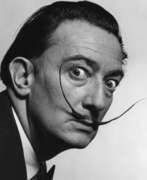

Salvador Dalí, a Spanish Surrealist painter and printmaker, is celebrated for his vivid and imaginative works that delve into subconscious imagery. Born on May 11, 1904, in Figueres, Catalonia, Spain, Dalí's early exposure to Impressionism and Renaissance masters significantly influenced his artistic development. His education in fine arts in Madrid further shaped his style, leading him to experiment with Cubism and avant-garde movements. In the late 1920s, Dalí embraced Surrealism, joining the Surrealist group in 1929 and rapidly becoming one of its most prominent figures.
Dalí's most famous work, "The Persistence of Memory," completed in 1931, epitomizes the Surrealist movement with its iconic melting clocks symbolizing the fluidity of time. His artistic repertoire was diverse, including painting, graphic arts, film, sculpture, design, and photography, often incorporating themes of dreams, the subconscious, sexuality, religion, and science. Despite his remarkable artistic contributions, Dalí's eccentric and flamboyant public persona often overshadowed his work. He faced criticism for his public support of the Francoist regime and the authenticity of some of his late works.
Dalí's legacy is preserved in major museums, notably the Dalí Theatre-Museum in Figueres and the Salvador Dalí Museum in St. Petersburg, Florida. These institutions showcase his extensive and varied body of work, illustrating his profound impact on Surrealism, pop art, and contemporary artists.
If you're captivated by the surreal world of Salvador Dalí and want to stay informed about new sales and auction events featuring his works, sign up for our updates. Our service is tailored specifically for art collectors and experts, providing timely information and insights into the vibrant market of Dalí's art. Remember, this subscription is focused solely on bringing you the latest in product sales and auction events related to Salvador Dalí. Don't miss out on the opportunity to enrich your collection with pieces from one of the most influential surrealists of all time. Sign up now and be the first to know about these exclusive events.
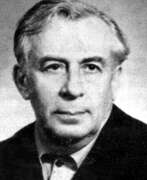

Isaac Aronovich Davidovich (Russian: Исаак Аронович Давидович) was a Soviet and Belarusian artist of Jewish origin of the second half of the twentieth century. He is known as a painter and graphic artist.
Isaac Davidovich worked in easel and monumental and decorative painting, as well as in easel and book graphics, he drew illustrations and posters. In the field of monumental art he created plafonds and panels.


Filippo de Pisis, actually Luigi Filippo Tibertelli was an Italian painter, graphic artist, writer and poet close to the school of metaphysical painting. From 1914 he studied at the University of Bologna, where he studied literature and philosophy.
Filippo de Pisis was a painter of the Italian Novecento. He is considered a representative of Italian futurism in painting. His work is post-impressionist and partly expressive.


Leon de Smet was a Belgian painter who is known for his contributions to the development of Fauvism and Post-Impressionism. He was studied at the Academy of Fine Arts in Ghent before moving to Paris to further his artistic education.
De Smet's early work was heavily influenced by the Impressionist movement, but he soon became interested in the use of bold colors and expressive brushstrokes that were characteristic of the Fauvist style. His paintings often featured rural landscapes, still lifes, and portraits, and he was known for his ability to capture the fleeting effects of light and color in his scenes.
During World War I, de Smet returned to Belgium and began to focus more on still lifes and interiors. His style became more subdued and introspective, reflecting the difficult conditions of the war years. In the 1920s and 30s, he returned to the use of bright colors and bold brushstrokes, and his work continued to evolve throughout his career.
His work continues to be celebrated for its contribution to the development of modern art in Belgium and beyond, and his paintings are highly valued by collectors and art enthusiasts around the world.
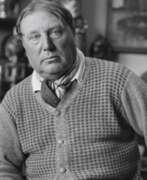

Maurice de Vlaminck was a French artist renowned for his vibrant use of color and contribution to the Fauvist movement. Born in Paris in 1876, Vlaminck's early work was marked by a passionate application of paint and a bold palette, drawing inspiration from Vincent van Gogh and Henri Matisse. His participation in the 1905 Salon d'Automne, alongside other Fauvist painters, was met with critical disdain, leading to the term "fauves" (wild beasts) being coined to describe their unorthodox use of intense color.
Vlaminck's career was characterized by a continuous exploration of color and form. Early on, he depicted scenes of daily life, landscapes, and portraits, imbuing them with a sense of motion through his dynamic brushwork. Notable works from this period include "Sur le zinc" (At the Bar) and "L'homme a la pipe" (Man Smoking a Pipe), which highlighted his departure from traditional portraiture and landscapes towards more expressive and mood-driven compositions. His landscapes, in particular, showcased a disregard for detail in favor of conveying atmosphere, a technique that was revolutionary at the time.
Throughout his life, Vlaminck's style evolved, showing influences from Post-Impressionism and later, a more monochromatic palette reminiscent of Paul Cézanne. Despite this evolution, he maintained a critical stance towards Cubism and its leading figure, Pablo Picasso, believing that Cubism had led French painting into a "wretched dead end". In his later years, Vlaminck's work adopted a darker palette and more naturalistic style, moving away from the Fauvist emphasis on color to explore the dramatic and expressive potential of landscapes and seascapes.
Vlaminck's impact on modern art is undeniable. His works are held in prestigious collections worldwide, including the Hermitage Museum in Saint Petersburg and the Minneapolis Institute of Art, attesting to his enduring influence and the continued fascination with his bold, expressive approach to painting.
For collectors and experts in art and antiques, Vlaminck's oeuvre represents a pivotal moment in the history of modern art, where the emotional intensity and visual impact of color were explored as never before. To stay informed on new product sales and auction events related to Maurice de Vlaminck, signing up for updates is recommended, offering exclusive insights into the vibrant world of Fauvism and modernist painting.
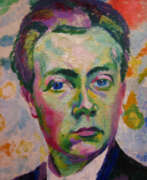

Robert Delaunay, a French artist, emerged as a pivotal figure in the development of early 20th-century art, blending the realms of painting and sculpture with his innovative approaches. His work is celebrated for its dynamic use of color and geometric shapes, making him a cornerstone in the Orphism movement, which he co-founded alongside his wife Sonia Delaunay and others. This movement is distinguished by its focus on vibrant colors and geometric forms, contributing significantly to the abstract art landscape.
Delaunay's artistic journey began earnestly at the age of 19 when he decided to fully dedicate himself to painting, contributing works to the Salon des Indépendants. His early career was marked by a deep engagement with Neo-Impressionism and Cubism, as evidenced by his collaborative work with Jean Metzinger and his exploration of color theory. Notable works from this period include "Paysage au disque" (1906–07) and "Champs de Mars: The Red Tower" (1911), showcasing his departure from representational art towards a more abstract, color-driven aesthetic.
Among Delaunay's celebrated series are the Eiffel Tower and Simultaneous Windows, reflecting his fascination with Parisian architecture and the dynamic interplay of light and color. These works, along with others like "L'Équipe de Cardiff" (1912-13) and "Endless Rhythm" (1934), are housed in prestigious museums such as the Musée d'Art Moderne de la Ville de Paris, The Solomon R. Guggenheim Museum, and the Tate collection. These pieces illustrate his evolving style, from the depiction of movement and technology in pre-war Paris to the rhythmic abstraction of later years.
Delaunay's influence extended beyond France, with significant contributions to exhibitions in Germany, Switzerland, and Russia, particularly through his involvement with Der Blaue Reiter group. His work not only captured the essence of the technological and cultural shifts of his time but also laid the groundwork for future artistic explorations into color and form.
For collectors and experts in art and antiques, Delaunay's oeuvre offers a rich study in the evolution of modern art, from its roots in Cubism and Neo-Impressionism to the heights of abstract expression. His works serve as a testament to the power of color and shape in conveying emotion and motion, making them invaluable to the understanding of 20th-century art history.
To stay informed on new sales, auctions, and exhibitions related to Robert Delaunay, sign up for updates. This subscription ensures you remain updated on opportunities to engage with Delaunay's influential body of work, reflecting the ongoing interest in his contributions to modern art.
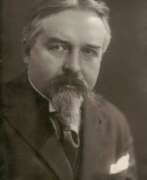

Maurice Denis, a French painter and writer, was an influential figure in the transition from impressionism to modern art. Born on November 25, 1870, in Granville, France, Denis's artistic journey began at the Académie Julian in Paris. Here, he met future collaborators like Paul Sérusier and Pierre Bonnard, with whom he later formed the Nabis group, a collective deriving its name from the Hebrew word "Nabi," meaning "Prophet".
Denis's style evolved from neoimpressionism, influenced by artists like Seurat, to a more decorative and colorful approach under the influence of Gauguin. This shift is evident in works like "Taches du soleil sur la terrace" (1890). He famously stated, "Art is no longer a visual sensation... it is a creation of our spirit," highlighting his belief in art as an idealistic expression, transcending mere imitation of nature.
Denis was also impacted by Japanese art, which influenced his compositions and styles, contributing to his unique and recognizable approach. His philosophy on art, encapsulated in his 1890 essay published in "Art et Critique," emphasized the importance of color and form in creating emotional depth, a notion that laid the groundwork for modernism. He argued that a painting's essence lies in its colors and composition, rather than its subject matter.
Throughout his career, Denis's work evolved towards a more classical approach. His involvement with the Ateliers d'Art Sacré, founded in 1919, demonstrated his interest in religious art and decoration. His notable works include "The Legend of Saint Hubert" (1897) and "The History of Music" for the Théâtre des Champs Elysées (1912-1913).
Tragically, Maurice Denis's life ended on November 13, 1943, when he was struck by a truck during the German occupation of Paris. However, his legacy endures through his contributions to modern art and symbolism, his influence on fellow artists, and his works displayed in various museums and galleries.
For collectors and art experts, Denis's work offers a unique glimpse into the evolution of modern art. His blend of symbolism, color, and form marks a significant shift in art history. To stay updated on new sales and auction events related to Maurice Denis's work, sign up for our newsletter. This subscription will keep you informed about the latest developments in the world of this remarkable artist.
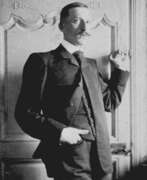

André Derain was a French artist, renowned as a painter, sculptor, and a pivotal figure in the development of Fauvism alongside Henri Matisse. Born on June 10, 1880, in Chatou, Yvelines, just outside Paris, Derain's artistic journey began in his youth. Despite initially studying to become an engineer, his passion for art led him to the Académie Julian and to acquaintances with notable artists like Matisse and Maurice de Vlaminck.
Derain's work, especially his paintings, is celebrated for its vibrant, expressive use of color and innovative compositions. His contributions to Fauvism, a movement characterized by the use of bold, non-naturalistic colors, marked a significant shift in the art world. The Fauvist period, particularly his collaboration with Matisse in the summer of 1905 in Collioure, culminated in works that were distinguished by their startling hues and wild brushwork, earning them the nickname "the wild beasts" or "les Fauves."
A notable period in Derain's career was his time in London in 1906, commissioned by art dealer Ambroise Vollard. His London series, including views of the Thames and Tower Bridge, are celebrated for their unique perspective and use of color, differing significantly from the traditional depictions of the city by artists like Whistler or Monet. These works stand out for their Pointillist influence and the effective conveyance of light and movement.
Derain's artistic evolution continued as he experimented with Cubism and was influenced by African art, as seen in his primitivist woodcuts for Guillaume Apollinaire's book "L'enchanteur pourrissant" (1909). His career, however, was not without controversy, particularly during World War II, when he was perceived as a collaborator due to his interactions with the Germans.
Despite the challenges and transformations in his career, André Derain left an indelible mark on the art world. His works are held in prestigious collections worldwide, including the Musée Cantini in Marseille and the Musée d'art moderne de Troyes. Derain's contribution to modern art, particularly through Fauvism, remains a subject of admiration and study among art collectors and experts.
If you're captivated by the artistic journey and pioneering spirit of André Derain, don't miss the opportunity to stay updated on his legacy. Sign up now to receive exclusive alerts on new product sales and auction events related to André Derain's work. Embrace your passion for art and culture, and ensure you're always informed about the latest offerings and unique pieces linked to this iconic artist.
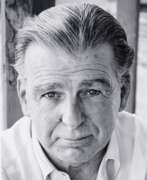

Sir William Dobell was an Australian portrait and landscape artist of the 20th century. Dobell won the Archibald Prize, Australia's premier award for portrait artists on three occasions. The Dobell Prize is named in his honour.


Boris Fedorovich Domashnikov (Russian: Борис Фёдорович Домашников) was a prominent Russian painter, celebrated for his deep emotional engagement with the landscapes and architecture of Russia. Born in 1924 in the village of Krivousova, Ivanovo region, Domashnikov was a student at the Ufa Theater and Art School, where he was under the tutelage of P.M. Lebedev and A.E. Tyulkin. He distinguished himself in the genre of landscape painting, frequently exploring themes of work and nature, particularly the serene and rugged beauty of the Urals and the historic architectural majesty of places like Novgorod and Pskov.
His early work, "Winter on the Edge," marked the beginning of his exploration into the provincial landscapes of the mountains, showcasing his ability to capture the silent majesty of nature. Throughout the 1960s, Domashnikov's interest expanded into the realm of ancient Russian architecture, resulting in a notable series that featured the Novgorod and Pskov regions. The late 1970s saw him focusing on Red Square, producing works that not only depicted its architectural grandeur but also conveyed the historical and emotional depth of this iconic locale.
Domashnikov's paintings are celebrated for their vibrant color and harmonious compositions, embodying a sublime and emotional perspective that resonates with viewers. His artworks are held in prestigious collections, including the State Tretyakov Gallery and the Academy of Arts, affirming his significance in Russian art history. Throughout his career, he remained an active participant in exhibitions and was honored with numerous awards, including the title of People's Artist of the USSR in 1982, reflecting his substantial contribution to Russian cultural heritage.
For art collectors and experts, the work of Boris Fedorovich Domashnikov offers a profound insight into the soul of Russian landscapes and architecture, rendered with a deep affection and nuanced understanding of his subjects. To stay updated on new discoveries and auction events related to Domashnikov's art, signing up for updates is highly recommended, ensuring enthusiasts do not miss out on opportunities to engage with the legacy of this remarkable artist.
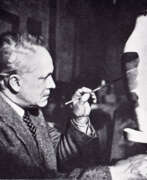

Raoul Dufy, a renowned French artist, is celebrated for his vibrant and decorative style, which left a significant mark in the realms of Fauvism and Post-Impressionism. Born in 1877 in Le Havre, France, Dufy's artistic journey was profoundly influenced by Henri Matisse's Fauvist work "Luxe, Calme et Volupté," which he encountered at the Salon des Indépendants in 1905. This experience steered him towards Fauvism, a style that emphasized bold contours and bright colors.
Dufy's artistic evolution saw him briefly embrace Cubism around 1920, after which he developed a unique approach. This approach, often referred to as stenographic, was characterized by skeletal structures, foreshortened perspectives, and the use of thin, quickly applied washes of color. His works, known for their cheerful and fashionably decorative nature, often depicted scenes of leisure like yachting, the French Riviera, and chic parties, capturing the essence of the period's optimism.
In addition to his painting, Dufy was also a commercial artist, illustrator, and designer, contributing significantly to textile design and public murals. His large-scale public art commissions combined modern and allegorical subjects with exuberant outlines and intense colors, showcasing a modernist take on traditional mural work. Notable works by Dufy include "The Regatta," "The Harvester," and the monumental "The Electricity Fairy," a large mural commissioned for the 1937 World's Fair in Paris.
His works are housed in prestigious public collections worldwide, including the Art Institute of Chicago, the Musée d'Art Moderne de Paris, and the National Gallery of Art in Washington, D.C. Despite his artistic achievements, Dufy's focus on decorative art and the lack of engagement with wider social concerns has led to a varied critical reception of his work. Nonetheless, his contribution to 20th-century art, particularly in popularizing a vibrant and illustrative style, remains undisputed.
If Raoul Dufy's artistry captivates you and you wish to stay informed about the latest artworks, exhibitions, and auction events related to this remarkable artist, we invite you to sign up for our updates. By subscribing, you'll receive timely notifications about new pieces for sale and upcoming auctions. This is a wonderful opportunity for collectors and art enthusiasts to enhance their appreciation and possibly their collections of Dufy's work. Stay connected with the world of art and don't miss any chance to acquire unique pieces by this celebrated artist.
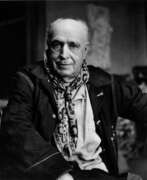

André Albert Marie Dunoyer de Segonzac was a French painter, graphic artist and illustrator known for his contribution to the Post-Impressionist and Fauvist movements.
Dunoyer de Segonzac's style was defined by his bold use of colour, his expressive brushwork, and his desire to capture the essence of the subject. In his work, he explored a variety of subjects, including landscapes, still lifes and scenes of everyday life. His paintings often displayed a sense of vitality and energy, with vibrant hues and dynamic compositions. The master often used intense hues to evoke an emotional response. His palette was characterised by a bold and expressive use of colour, giving his works a sense of vibrancy and dynamism.
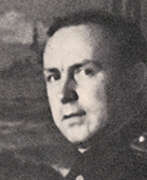

Alexander Alekseevich Efimov (Russian: Александр Алексеевич Ефимов) was a Soviet artist of the mid-twentieth century. He is known as a battle painter, marinist and teacher.
Alexander Efimov participated in the Great Patriotic War and the main theme of his work was the history of the navy. He actively worked in the studio of marinists of the fleet, in his work he used the techniques of oil painting and watercolor. His works, including the paintings "Leningradki", "Sailors in the battles for Budapest", "Northern Fleet", became famous for their historical significance.
Efimov's works are in museums and private collections not only in Russia but also abroad.


André Evard was a Swiss painter and drafter. His special significance lies in the field of constructive art. He is counted among the first artists who did not work figuratively. In the course of his life he produced hundreds of oil paintings, a large number of drawings as well as approximately 2000 to 3000 watercolor and gouache paintings.
André Evard's work is difficult to classify in the categories of art history. He was not committed to any particular style, but rather reverted to the past, mixed styles and invented something new. Art Nouveau, Cubism, and geometric-constructive abstractions all define his work. While in Paris he was part of the avant-garde, he later repeatedly withdrew to representational painting.
On the one hand, the play of forms and colors leads to highly expressive representational landscapes, on the other hand, fascinating still lifes emerge from the clear reduction, which show unusual color combinations and completely new object-space relationships. In doing so, he always exposed himself to the risk of a stylistic break, which, however, is the special feature of his artistic oeuvre. He painted abstract when hardly anyone painted abstract and returned to representational painting when Abstract art dominated.


Othon Friesz was a French artist, pivotal in the Fauvism movement, celebrated for his vivid use of color and dynamic composition. Born in Le Havre, his artistic journey began under the guidance of Charles Lhuillier, which deeply influenced his foundational style. Initially, Friesz experimented with the luminous palette of Fauvism, creating works alongside contemporaries like Henri Matisse and André Derain. His Fauvist period was marked by bold, unmodulated colors aimed at capturing the emotional effect of a scene rather than its realistic depiction.
However, the later years of his career saw a significant shift in his artistic approach. Moving away from the Fauvist style, Friesz embraced a more classical and structured composition, drawing inspiration from the likes of Poussin, Chardin, and Corot. This transition reflected his respect for Cézanne's principles of logical composition and simple tonality. Despite this evolution, his work retained a baroque vitality, particularly in his landscapes, still lifes, and figure paintings, where the careful arrangement of planes and volumes spoke of his deep understanding of spatial relationships.
Friesz's oeuvre is a testament to his versatility and ability to adapt and evolve his style while remaining rooted in classical traditions. His works, spanning from vibrant Fauvist landscapes to more restrained classical compositions, are housed in prestigious collections and museums worldwide, offering a comprehensive view of his artistic development.
For art collectors and enthusiasts, Friesz's body of work offers a unique insight into the early 20th-century European art scene, particularly the transition from avant-garde movements like Fauvism to more traditional approaches. His paintings not only reflect his personal artistic journey but also the broader shifts in art history during his lifetime.
To stay informed on new product sales and auction events related to Othon Friesz, signing up for updates can be a valuable resource. This subscription ensures that collectors and experts in art and antiques are always in the know regarding opportunities to acquire works by this influential artist.


Roger Eliot Fry was an English painter and critic, and a member of the Bloomsbury Group. Establishing his reputation as a scholar of the Old Masters, he became an advocate of more recent developments in French painting, to which he gave the name Post-Impressionism.
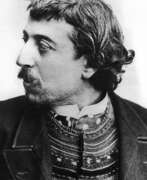

Paul Gauguin, a French artist born in Paris in 1848, is renowned for his significant contributions to Post-Impressionism, Primitivism, and Synthetism. Gauguin's art is distinguished by his experimental use of color and style, which set him apart from the traditional Impressionist movement.
Gauguin's early life was marked by a period in Peru, which influenced his artistic perspective. Initially, he pursued a career in stockbroking but soon turned to art, driven by financial necessity and a growing passion. His artistic journey began under the mentorship of Impressionist artist Camille Pissarro and through exposure to the works of other avant-garde artists.
The hallmark of Gauguin's work is his exploration of non-Western cultures, particularly during his time in Tahiti and the Marquesas Islands. This period saw the creation of some of his most famous works, including "Where Do We Come From? What Are We? Where Are We Going?" His paintings from this era, characterized by vivid colors and Symbolist themes, reflect a fusion of cultural influences and his quest for a "primitive" expression of spiritual and emotional states.
Despite his innovative style, Gauguin struggled with financial difficulties and health issues throughout his life. His work received little recognition during his lifetime, but posthumously, he gained acclaim for influencing modern artists like Pablo Picasso and Henri Matisse.
Today, Gauguin's works are celebrated in galleries and museums worldwide for their unique blend of cultural influences and artistic innovation. His enduring legacy is a testament to his unique vision and the profound impact he had on the art world.
Collectors and experts in art and antiques, stay updated on new product sales and auction events related to Paul Gauguin. Sign up now for exclusive updates and immerse yourself in the world of this visionary artist.
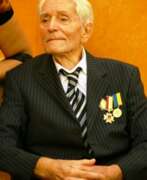

Albin Stanislavovich Gavdzinsky (Russian: Альбин Станиславович Гавдзинский) was a Soviet and Ukrainian artist of the second half of the twentieth and early twenty-first centuries. He is known as a painter, famous for his landscapes, genre paintings and portraits.
Albin Gavdzinsky in the early 1950s held his first solo exhibitions in Odessa, Kiev and Kharkov and showed his bright artistic personality. The artist was distinguished by his outstanding efficiency and precision in depiction, which was evident in his clear forms and bright colors. In 1961 he was recognized as Honorary Citizen of the city of Novaya Kakhovka, and his works (237 canvases) served as the basis for the creation of the city's art gallery, which in 2003 was named after him.
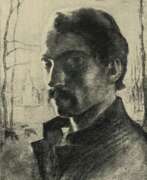

Robert Lvovich Genin (Russian: Роберт Львович Генин) was a Jewish-born artist of the first half of the twentieth century who worked in several countries, including the Russian Empire, Germany, France, Germany, Switzerland, and the USSR. He is known as a painter and graphic artist.
Robert Genin worked in a variety of genres including landscapes, portraits, genre compositions and nudes. He also did lithography, woodcuts and etching. His style evolved from Jugendstil and Symbolism in the early 1900s to Expressionism after the First World War. He later came to a kind of lyrical primitivism. The artist worked in both easel and monumental painting and was influenced by various artists.


Ida Gerhardi was a German artist of the late nineteenth and early twentieth centuries. She is known as a painter, representative of classical modernism.
Ida Gerhardi at the beginning of her career worked mainly in the genre of landscape, was an adherent of the Barbizon school of painting. Later she began to specialize in portraits, then switched to marine subjects, and in the last years of her life she created still lifes and genre paintings. Beginning in 1900, she was strongly influenced by the Post-Impressionists and Fauvists, and from 1911 by Rhenish Expressionism.
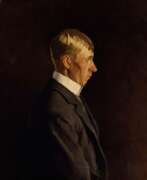

Spencer Frederick Gore was a British painter of landscapes, music-hall scenes and interiors, usually with single figures. He was the first president of the Camden Town Group, and was influenced by the Post-Impressionists.


Max Gubler was a Swiss artist.
He experimented with various contemporary styles, until developing his own personal vivid style of landscape painting on Lipari. Later he turned to abstraction, but continued to use bright colours. In 1956 he did a series of pastel illustrations for Ernest Hemingway's The Old Man and the Sea. In his late works, darker colours predominate.
His work was shown in many galleries.
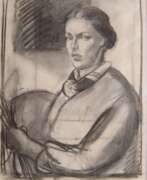

Norah Gurdon was an Australian artist. Gurdon attended the National Gallery School from 1901 to 1908, being taught by noted artists Frederick McCubbin and Bernard Hall. An accomplished landscape and still-life painter, Gurdon exhibited her works with the Victorian Artists Society while still a student. She established her artistic prowess early on by winning the major category for oil painting in the 1909 City of Prahran's Art Exhibition Prize.
Norah Gurdon was a regular and successful exhibitor of work, exhibiting with the Victorian Artists Society, Melbourne Society of Women Painters and Sculptors, and the Australian Art Association. In the 1920s she held many solo exhibitions at the Athenaeum Gallery, and later at the Women's Industrial Arts Society in Sydney, and the Royal Queensland Art Society in Brisbane.
